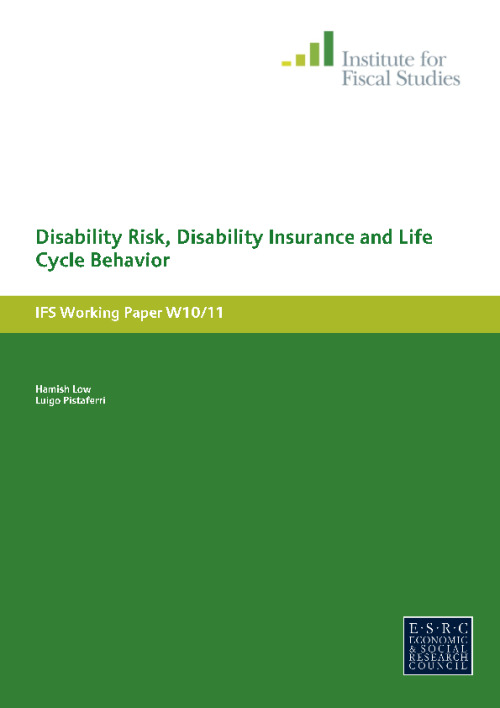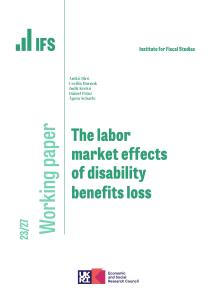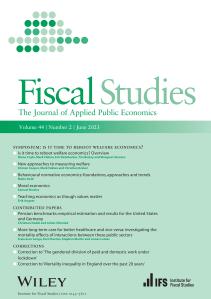The Disability Insurance (DI) program in the US is a large social insurance program that offers income replacement benefits to people with work limiting disabilities. The proportion of DI claimants in the US is now almost 5% of the working-age population and the cost is three times that of unemployment insurance. The key questions in thinking about the size and growth of the DI program are whether program claimants are genuinely unable to work, and how valuable is the insurance provided.
This paper has three aims:
- We provide a framework for weighing up the insurance value of disability benefi…ts against the incentive cost of inducing healthy individuals to stop work at different points of their life-cycle.
- We estimate the risks to health that may lead to work-limiting disabilities and the risk to wages that may lead to individuals choosing not to work. We also estimate the extent of false awards made through the DI program alongside the proportion of awards to those in genuine need.
- We use our model and estimates to characterize the economic effects of the disability insurance and to consider how policy reforms would affect behaviour and standard measures of household welfare.
We differentiate disability status by its severity, and show that a severe disability shock leads to a decline in wages of 40%, as well as a substantial rise in the fixed cost of going to work. In terms of the effectiveness of the DI program, we estimate high levels of rejections of genuine applicants. In our counterfactual simulations, this means that household welfare increases as the program becomes less strict, despite the worsening incentives for false applications that this implies. On the other hand, incentives for false applications are reduced by reducing generosity and increasing reassessments, and these policies increase household welfare, despite the worse insurance implied.











